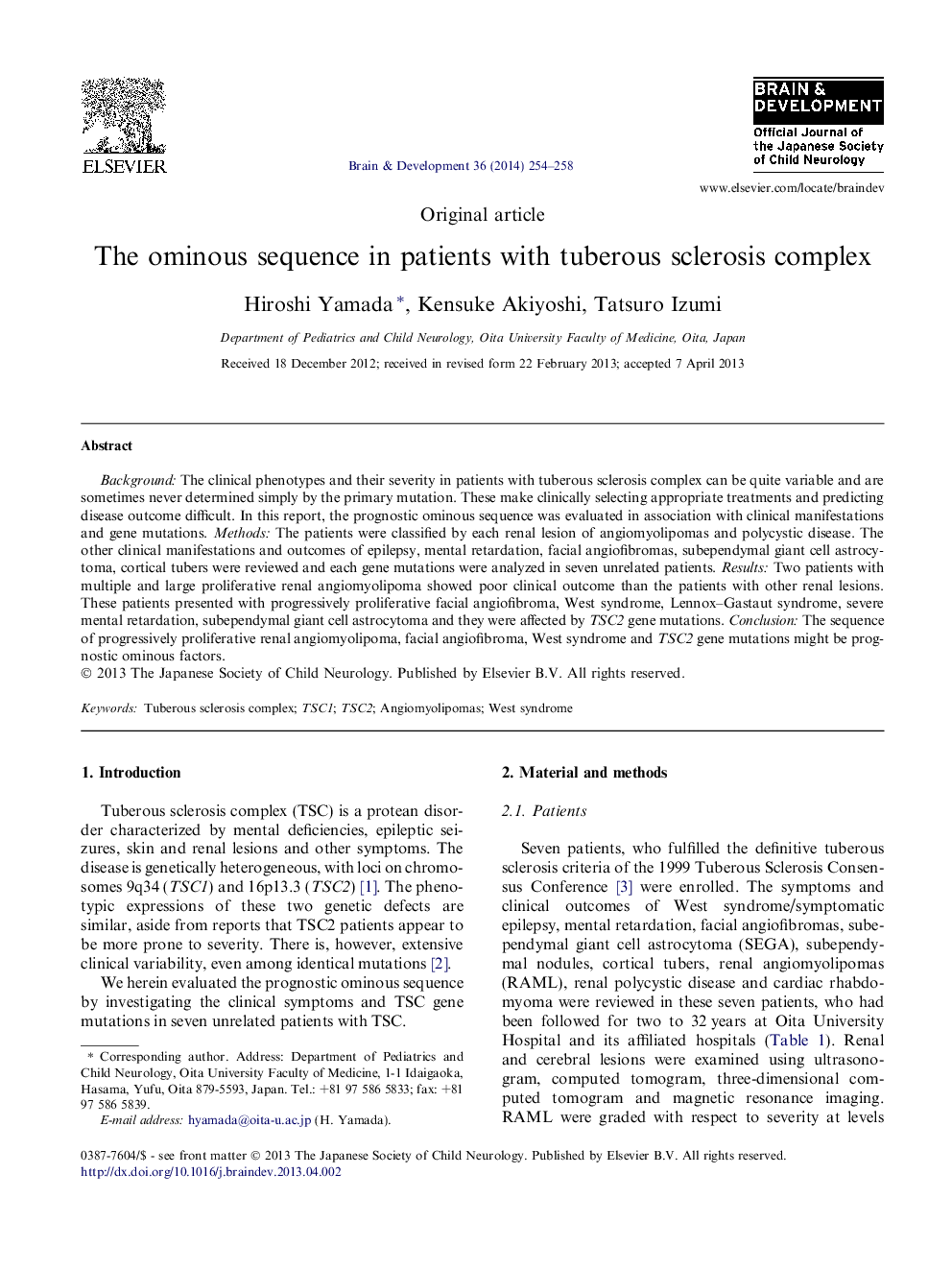| Article ID | Journal | Published Year | Pages | File Type |
|---|---|---|---|---|
| 3037061 | Brain and Development | 2014 | 5 Pages |
Background: The clinical phenotypes and their severity in patients with tuberous sclerosis complex can be quite variable and are sometimes never determined simply by the primary mutation. These make clinically selecting appropriate treatments and predicting disease outcome difficult. In this report, the prognostic ominous sequence was evaluated in association with clinical manifestations and gene mutations. Methods: The patients were classified by each renal lesion of angiomyolipomas and polycystic disease. The other clinical manifestations and outcomes of epilepsy, mental retardation, facial angiofibromas, subependymal giant cell astrocytoma, cortical tubers were reviewed and each gene mutations were analyzed in seven unrelated patients. Results: Two patients with multiple and large proliferative renal angiomyolipoma showed poor clinical outcome than the patients with other renal lesions. These patients presented with progressively proliferative facial angiofibroma, West syndrome, Lennox–Gastaut syndrome, severe mental retardation, subependymal giant cell astrocytoma and they were affected by TSC2 gene mutations. Conclusion: The sequence of progressively proliferative renal angiomyolipoma, facial angiofibroma, West syndrome and TSC2 gene mutations might be prognostic ominous factors.
